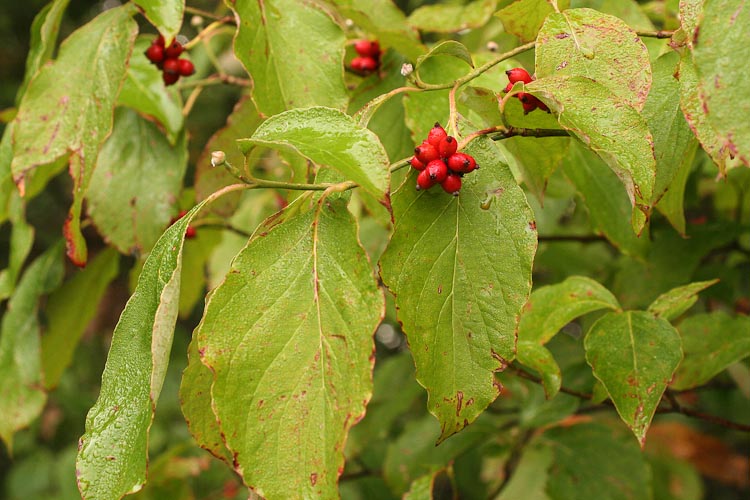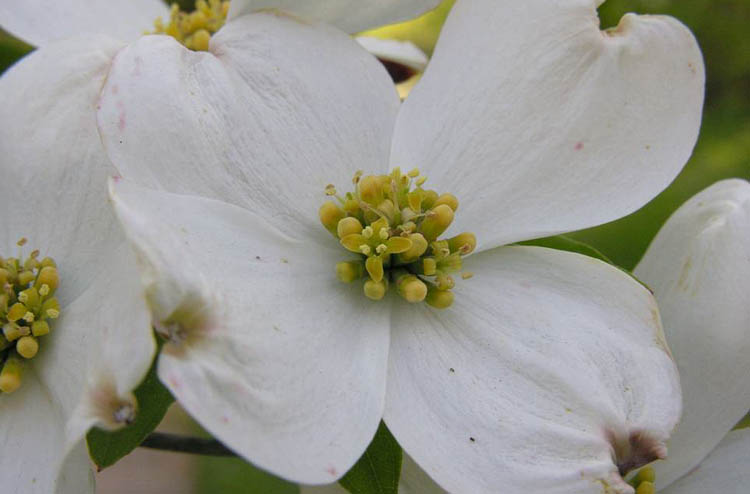Dogwood (Cornus florida)
Dogwood (the “D” in MADCAPHORSE) trees have (except for one weird species aptly called Cornus alternifolia) opposite leaves that are simple in complexity, with entire margins.
The species called “flowering dogwood” is an understory tree; its habitat is in woods beneath other trees. The blooming display is quite conspicuous in early spring.
The name “flowering dogwood” is a bit misleading. Indeed, all dogwood species produce flowers, but they are small. Flowering dogwood is called that because its blooms are very conspicuous. They are packed into little head-like clusters surrounded by huge bracts that are actually greatly expanded flower bud scales.
The bark of dogwood is worse than its bite, and has been useful. The inner bark is bitter and was used as a substitute for quinine (a malaria treatment), and Native Americans used bark of the roots to make a red dye.



